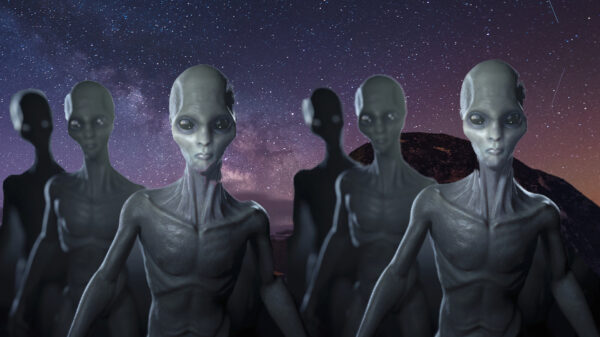An unanticipated terrestrial landing by a non-human biologic entity — an interstellar explorer from a far corner of the galaxy — provides a unique opportunity for an objective evaluation of Homo sapiens, the dominant species of Earth. As follows a projected imagining of our newly discovered neighbor’s report.
Transit and Nutrition: Energy Consumption and Food Choices
The primary mode of terrestrial transit — automobiles, fueled by fossilized carbon compounds — is an unexpected discovery. Despite the known detrimental effects of burning these resources, such as the release of carbon dioxide contributing to planetary warming, and availability of alternative renewable energy sources like solar or wind power, these ‘vehicles’ remain in widespread use.
Simultaneously, the entity observes human dietary preferences gravitating towards certain species — cows and chickens, specifically. Chicken is the favorite on a global basis, while in the US, beef is nearly ubiquitous. These food choices, while culturally complex, bring significant environmental impacts, as these forms of animal agriculture contribute substantially to greenhouse gas emissions, deforestation, and water pollution. An emergent but still nascent trend towards plant-based diets is noted, reflecting a growing awareness of these issues within certain sections of the human population.
Environmental Stewardship: Circularity, Sustainability, and Humanity’s Untapped Potential
Upon examining human interaction with their environment, the extraterrestrial observer identifies a conspicuous incongruity. Despite possessing an array of technological solutions and strategies centered around circularity and sustainability, many remain under-applied or wholly overlooked.
R. Buckminster Fuller, a prominent Earth thinker, advocated for ephemeralization — the idea of accomplishing more with increasingly fewer resources. This principle dovetails with the broader concept of a circular economy, where resources are continuously recycled and reused, reducing waste and environmental impact. The potential benefits of such an approach are manifold, from conserving raw materials to minimizing the energy expenditure associated with resource extraction and processing.
Yet, the inertia to transition to a circular economy seems puzzling to the observer. Earth is replete with examples of nature’s own circular systems, from water cycles to nutrient recycling in ecosystems. Emulating these natural processes in human systems — be it in production, consumption, or waste management — would align the species with the planet’s intrinsic rhythms, promoting long-term sustainability.
The sun remains an emblematic symbol of untapped potential. This stellar energy source delivers to Earth more power in an hour than its entire population consumes in a year. By harnessing even a fraction of this through solar technology, humans could significantly reduce their reliance on non-renewable, ecologically harmful fossil fuels. However, despite the vast possibilities solar and other renewable energies present, their adoption is sporadic, often impeded by short-term economic considerations rather than long-term planetary well-being.
Earth’s composition itself, abundant in minerals and other vital resources, refutes the Malthusian notion of inevitable resource scarcity due to population growth. With strategic application of circular principles, these resources can be continuously repurposed, supporting not just the current but future human generations as well.
The concept of sustainability, which entails meeting the needs of the present without compromising the ability of future generations to meet their own needs, appears to be at odds with many prevailing human practices. Yet voices like Fuller’s emphasize that, with innovation and holistic stewardship, a sustainable and abundant coexistence is attainable.
While the tools and knowledge exist to craft a harmonious, sustainable future, there remains a gap between understanding and action. The challenge for Earth’s dominant species is not merely technological but philosophical — reshaping values, aspirations, and collective will to forge a path of true sustainability.
Socioeconomic Structures: Money, Inequality, and the Paradox of Governance
Delving into human socioeconomic constructs, the observer is particularly intrigued by the notion of ‘money’ — an abstract medium that stands as a proxy for value and resource distribution. What’s striking isn’t just the existence of this system, but the stark inequalities it perpetuates.
Human societies historically arose around communal sharing and mutual aid, but with the advent of monetary systems, resource distribution has increasingly been concentrated among a select few. Vast disparities exist where a minuscule percentage of the population controls a disproportionate share of the planet’s wealth, while a significant majority struggles for basic sustenance. Such imbalances inevitably lead to socio-cultural fractures and pervasive feelings of disenfranchisement among the less privileged.
Government and political structures, ideally established to safeguard the well-being of all citizens and ensure equitable resource distribution, often exacerbate these inequalities. The observer notes with intrigue that, regardless of the political system in place — be it democracy, socialism, or others — evidence of corruption, nepotism, and exploitation of the masses is pervasive. This presents a paradox: institutions that should, in theory, promote justice and fairness frequently become instruments for further entrenching disparities.
Furthermore, the influence of wealth on governance is unmistakable. Those with significant financial resources often have a disproportionate sway over policy decisions, marginalizing the voices of the majority. This ‘wealth-driven’ governance undermines the very ethos of democratic systems, where every individual’s voice should hold equal weight.
It’s also evident that economic and political systems intertwine, with the latter frequently being harnessed to protect the interests of the wealthy elite. Exploitative practices, ranging from unfair labor practices to environmentally destructive enterprises, are often sanctioned and protected under the guise of economic growth, further deepening societal rifts.
The observer also identifies a profound challenge faced by human societies: while the intellectual foundations for justice, equity, and sustainable coexistence are well-established, the practical implementation remains riddled with contradictions and challenges. The species seems trapped in a cycle of short-term gains, often at the cost of long-term societal cohesion and planetary health.
A Glimpse Through the Alien Lens: The Enigma of Homo Sapiens
Amid the vast tapestry of life scattered across the cosmos, the Earth-bound Homo sapiens stand out as a unique amalgamation of contradictions. Having watched them from up close, our extraterrestrial observer perceives them not merely as a dominant species, but as a civilization on the cusp — teetering between monumental promise and precipitous decline.
Humanity’s technological ingenuity is undeniable. From harnessing energy to creating intricate digital realms, their advancements are both marvelous and dizzying. Yet, with every stride forward, there’s a shadow cast by neglect, be it towards their environment or their own kind.
The concept of ‘money’ and the ensuing social structures, intended as tools for organization and mutual benefit, have morphed into double-edged swords. They have catalyzed immense innovation but have also birthed deep-rooted inequalities. The potential for a harmonious society exists, but the pull of power and short-term gains consistently muddies the waters of progress.
Governance systems, envisioned as pillars of justice and equality, often reveal themselves as arenas of power play, where influence is auctioned to the highest bidder. The observer might ponder: for a species so capable of introspection and empathy, why do systemic imbalances persist?
Despite these conundrums, the resilience and adaptability of Homo sapiens shine through. Their arts, culture, and shared histories tell tales of perseverance, hope, and an innate desire for betterment. Societies globally are marked by pockets of individuals and communities tirelessly working to mend the fabric of their world, even as larger forces threaten to tear it asunder.
Our non-human observer, having witnessed the duality of human existence, might leave Earth with a sense of cautious optimism. Here is a species, so clearly capable of greatness, but also prone to self-inflicted wounds. The trajectory of Homo sapiens remains uncertain, but their potential — to rise, evolve, and maybe one day join the interstellar community as equals — is irrefutable. In their story, the universe may find both a cautionary tale and a beacon of hope.
- Homo Sapiens Under the ET Microscope: A Non-human Biologic’s Perspective
- The Stoic Renaissance: Resurgence of an Ancient Philosophy in Modern Times
- From Shadows to Spotlight: Decoding Government Transparency on UFOs
- Enigmatic Aerial Encounters: Probing the Theories of UFOs
- What is Stoicism and why is this Ancient Philosophy Bigger than Ever?
Comments
0 comments




























